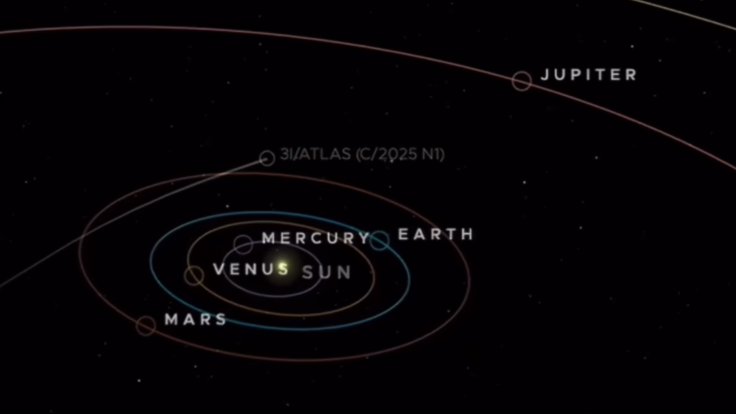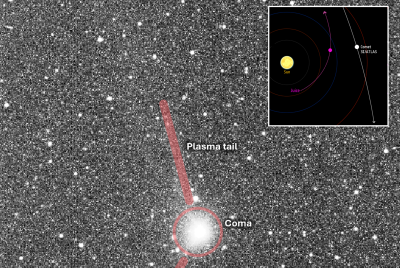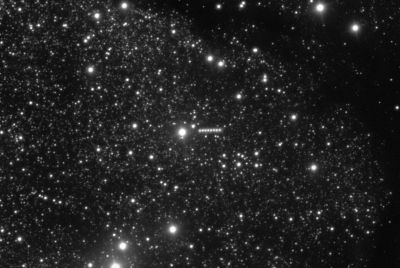Is 3I/ATLAS Alive? NASA's Silence Fuels Speculation After Comet's Mysterious Path Change
NASA has yet to explain why the interstellar comet 3I/ATLAS changed direction and showed one of the strangest chemical signatures ever seen, prompting online theories about alien involvement.

NASA's ongoing silence about interstellar comet 3I/ATLAS has ignited global speculation, with astronomers reporting that its changing trajectory and unusual chemical profile defy the norms of natural cometary behaviour.
The space agency has issued no public updates since early September, leading to online theories suggesting the comet might even be under 'artificial influence'.
Rare Visitor From Another Star
First detected by the Asteroid Terrestrial-impact Last Alert System (ATLAS) in Chile on 1 July 2025, 3I/ATLAS is only the third confirmed interstellar object to enter our Solar System—after ʻOumuamua (2017) and 2I/Borisov (2019).
Data from the Hubble Space Telescope show a tear-shaped dust cloud enveloping its icy nucleus, confirming that it is on a hyperbolic path--meaning it is not gravitationally bound to the Sun and will eventually leave the Solar System.
Anomalies Raise Questions
Astronomers tracking 3I/ATLAS through multiple observatories noticed that, unlike most comets, its tail initially pointed toward the Sun before later shifting in the opposite direction.
The Planetary Society said such behaviour was 'puzzling and not yet fully explained.'
Meanwhile, a James Webb Space Telescope (JWST) study found that the comet's coma is composed mainly of carbon dioxide, with a CO₂-to-water ratio eight times higher than typical Solar-System comets.
The finding suggests the object formed in a region with extremely low water ice--possibly outside the frost line of another star.
Further intrigue came when astronomers noted that its approach vector lies nearly within the planetary plane, an alignment seen in less than 0.2 per cent of randomly incoming interstellar objects, according to a Medium essay by Harvard astrophysicist Avi Loeb.
Alien-Probe Theory Resurfaces
In his essay, Loeb argued that 3I/ATLAS might warrant comparison with 'Oumuamua, which he famously suggested could be an extraterrestrial probe.
He said the comet's unusual tail, composition, and trajectory 'raise legitimate scientific questions' that should not be dismissed.
However, most scientists remain sceptical. NASA told The Guardian that the comet 'behaves like a natural body in all observable ways,' rejecting claims of alien control.
Planetary scientists also caution that interstellar comets often display unfamiliar dynamics because they formed under different physical conditions.
Silence Fuels Speculation
NASA's limited communication since September has sparked theories that the agency may be withholding new information.
Some online outlets, including the Economic Times, speculated that the space agency had made a 'secret move' after detecting unusual light fluctuations.
Astronomers counter that the silence likely reflects an observational gap: 3I/ATLAS is currently at solar conjunction — hidden behind the Sun — and thus invisible to most telescopes.
As IFL Science noted, the object will reach perihelion in late October 2025, when it will be closest to the Sun and most difficult to observe.
What Happens Next
The European Space Agency expects 3I/ATLAS to re-emerge from behind the Sun in December 2025, when telescopes will again be able to capture its activity and confirm whether the tail and trajectory anomalies persist.
If verified, scientists say the data could expand knowledge of interstellar chemistry and comet physics — or potentially hint at unknown mechanisms.
'It's a unique window into material born around another star,' said one astronomer quoted by Live Science.
For now, 3I/ATLAS remains a source of both scientific fascination and public mystery—its next visible phase may determine whether it's misunderstood or something far stranger.
© Copyright IBTimes 2025. All rights reserved.





















